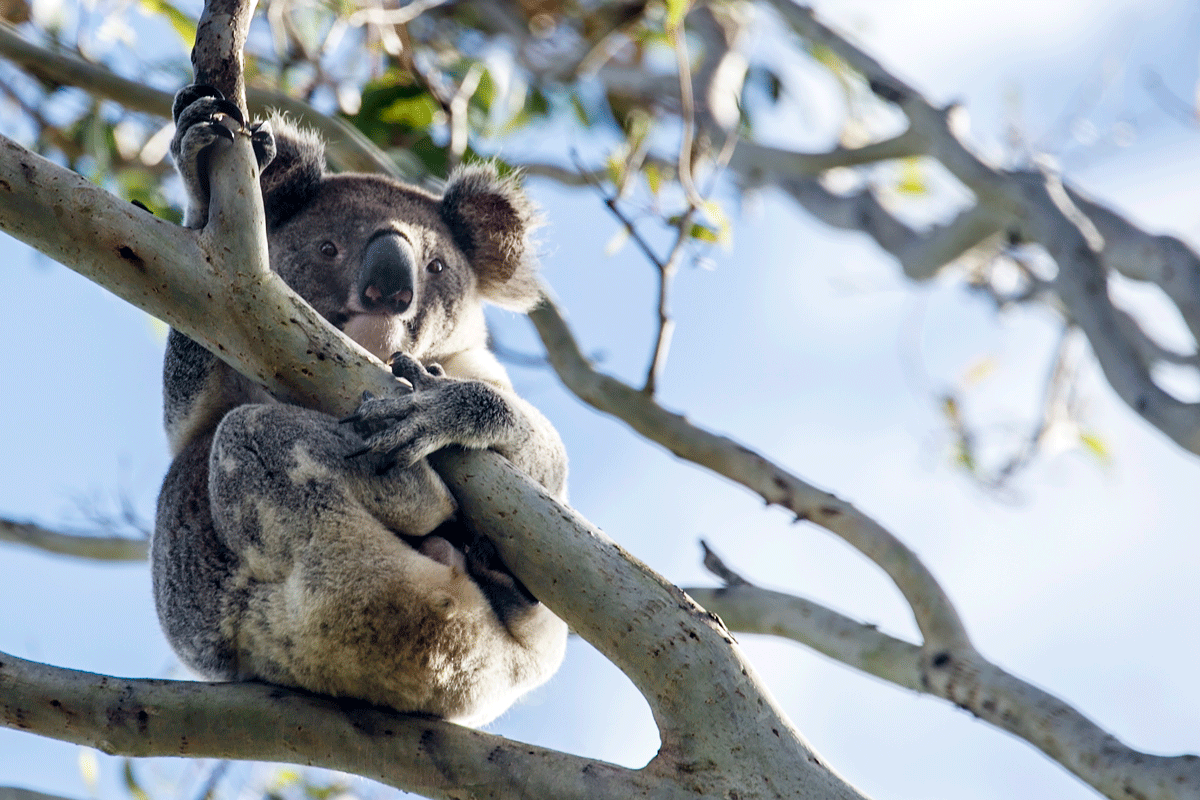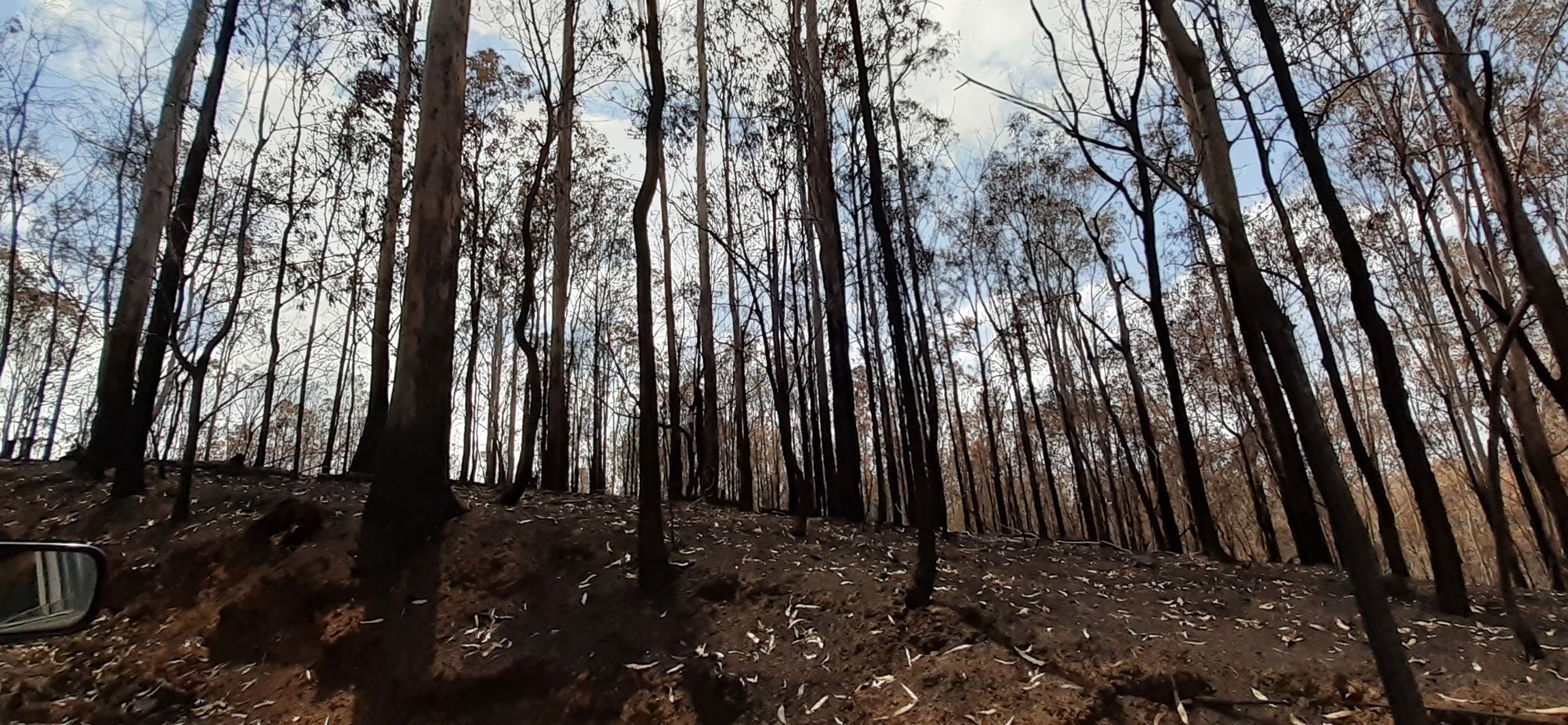
Dailan Pugh
The Koala Wars erupted between the National and Liberal parties last September. While the Nationals are claiming victory over the Liberals, it is the loggers that have prevailed over koalas and local councils.
Ironically the Nationals’ declaration of war came after the bipartisan inquiry into ‘Koala populations and habitat in NSW’ released their findings in June 2020 that the regulatory framework for private native forestry does not protect koala habitat on private land, and that without urgent government intervention to protect habitat the koala will become extinct in New South Wales before 2050.
This appeared to inflame the debate about State Environmental Planning Policy (SEPP) Koala Habitat Protection 2019, which applied to private forests, home to more than 60 per cent of NSW’s koalas. In early September the Nationals threatened to cross the floor unless the Liberals agreed to their demands to weaken protections for koalas. The Liberals surrendered.
Fragmentation and loss of habitat the most serious threat
The inquiry reaffirmed that fragmentation and loss of habitat poses the most serious threat to koalas in NSW. We’ve known for decades that if we want koalas to survive, we first need to protect where they live.
Back in 1995 a coalition government even adopted a policy to achieve this State Environmental Planning Policy 44 (SEPP 44). It required councils to prepare Koala Plans of Management (KPoMs) to identify where they live, termed ‘core koala habitat’, and to protect it in environmental zones.

SEPP 44 had a fundamental flaw because it only allowed forests comprising15 per cent of 10 feed-tree species to be identified as core koala habitat, leaving dozens of key feed trees out, meaning vast areas of core koala habitat didn’t qualify.
The Local Land Services Act (LLSA) relied upon this mapped core koala habitat to meet its obligations to protect koalas, by prohibiting logging of core koala habitat and generally requiring consent before it can be cleared.
Lack of political will and an intent to make SEPP 44 ineffective
A combination of lack of political will and an intent to make SEPP 44 ineffective, coupled with the difficulty and expense for councils to prepare plans, made SEPP 44 a policy failure.
By 2020 only six KPoMs had been approved, mostly covering just parts of council areas, with just 5–7,000 ha of core koala habitat identified for protection, after 25 years. And most of this had pre-existing logging approvals that were allowed to continue. Another five finished KPoMs were still waiting for approval, Tweed and Clarence local government areas (LGA) since 2015 and Byron LGA since 2016.
After years of procrastination, in December 2019 cabinet approved the new SEPP (Koala Habitat Protection) 2019 that, while still problematic, rectified many of the definitional problems with SEPP 44, including increasing the number of use trees from 10 to 123.
Loggers beginning to freak out
It came into effect in March 2020, when the guidelines were released. By then the loggers were beginning to freak out because they were concerned that the new rules made it easier for councils to identify core koala habitat, and they wouldn’t be allowed to log it.

NSW Farmers joined in as they wanted to remove constraints on land clearing. They were spooked by the map of likely koala habitat, the Koala Development Application Map, labelled the pink DA Map. It was only intended to limit the area where development applications had to consider koalas, but some Nationals were falsely claiming it was core koala habitat that all required protection.
The key request was that the SEPP be decoupled from the Local Land Services Act, meaning that core koala habitat identified in a KPoM would no longer have logging excluded or require consent before it was cleared.
Liberals repeatedly agreed to decoupling
The Liberals had repeatedly agreed to the decoupling since the SEPP was adopted in 2019, but wanted the Nationals to first put forward alternative protection for koalas from logging and clearing, though they failed to do that.
By mid May 2020 the government had begun the formal process of changing the SEPP and the guidelines, with a focus on removing the pink DA Map.
The release of the koala inquiry report in late June was followed by the release of NSW’s 2018 land-clearing statistics, showing that since 2016 clearing of woody vegetation had more than doubled to 60,800 ha. Most worryingly over 50 per cent of this clearing was unexplained, meaning it was unapproved, unassessed, and unknown whether it included koala habitat.
While the Nationals hadn’t managed to get the variety of feed trees contributing to core koala habitat reduced from 123 species down to an arbitrary 39, Planning Minister Rob Stokes appeared to have agreed to most of their asks.
Nationals declared the beginning of hostilities
Despite this, the Nationals declared the beginning of hostilities in early September 2020, when first Clarence MP Chris Gulaptis and then Coffs Harbour MP Gurmesh Singh claimed they would move to the cross-benches. On 10 September the whole of the National Party piled in and made the same threat, provided they kept all their perks. The Nationals likened it to ‘greyhounds on steroids’, considering koalas a threat to their political survival. This was dubbed the Koala Wars.

The Nationals’ attack was based on misinformation and lies. For example, the pink DA map, with its inaccuracies, was a primary focus, even though the decision to remove it had been made four months previously. No wonder the Liberals were outraged.
Liberals surrender
Under the attack the Liberals surrendered, Rob Stokes amended the SEPP to narrow the definition of core koala habitat, and the Nationals were given carte blanche to write their own Local Land Services Amendment (Miscellaneous) Bill, which was introduced to the Lower House on 14 October, 2020.
This was dubbed the Koala Killing Bill as it removed protection for core koala habitat on rural lands while offering no alternative protection, allowed logging to over-ride all councils’ Local Environment Plans (LEP) and NSW State Environmental Planning Polices, allowed some self-assessed clearing in environmental zones, and doubled logging approvals to 30 years.
It was not just about koalas. The Nationals’ intent was to allow logging to occur in all councils’ environmental zones, opening up 167,000 ha of private forests in northeast NSW where ‘greenie local councils’ currently prohibit logging. Councils’ existing consent requirements for logging over another 600,000 hectares of private forests was to be removed.
Rob Stokes reputedly also gave the Nationals a promise that councils would not be allowed to protect identified core koala habitat in environmental zones.
Liberals support ‘Koala Killing Bill’
While the Liberals supported the Koala Killing Bill, it came to a halt in November when Upper House Liberal Catherine Cusack took a principled stand by crossing the floor and referring the bill to the Upper House Planning and Environment committee for review.
In retribution on 26 November, 2020, Premier Berejiklian did a deal with the Nationals’ leader John Barilaro to revert to SEPP 44, renamed as SEPP (Koala Habitat Protection) 2020.

To pre-empt the inquiry Planning Minister Rob Stokes and Environment Minister Matt Kean did a deal with Deputy Premier John Barilaro, which was announced on 8 March, 2021, without any detail. The general thrust is to resurrect most provisions of the Koala Killing Bill, including that the 87 per cent of private lands zoned for primary production or forestry will not be subject to SEPP 2019, logging will be allowed to over-ride local environmental plans, and the Minister for Planning will take over councils’ rights to rezone rural land to an environmental zone.
This time they intend to avoid parliamentary scrutiny by implementing most of this through changes to the SEPP and ministerial directions.
Koala Habitat Protection – 2021
On 17 March the new SEPP (Koala Habitat Protection) 2021 was made. As foreshadowed it does not apply to rural and forestry zones, which comprise 90 per cent (2.4 million ha) of private forests in northeast NSW. The 2020 revision of SEPP 44, with its 10 feed trees and manifest problems, continues to apply to these lands.
In a significant change, KPoMs now also need to be approved by the secretary of the Department of Regional NSW (Barilaro’s department).
There is worse to come.
Far from being a step forward, Planning Minister Rob Stokes’s ‘new solution’ has made the already dysfunctional SEPP process into a farce, reduced already inadequate koala protections, and opened up thousands of hectares of protected environmental zones for logging.
With core koala habitat even more difficult to identify and most of its protection about to be removed, it’s the height of hypocrisy for Environment Minister Matt Kean to claim this ‘new solution will ensure protections for core koala habitat and colonies across NSW’.




Such a comprehensive record of a disastrous situation for koalas. Thank you Dailan for your incredible attention to detail. This article needs to go to all those politicians who spruik their koala credentials with one breath and kill them with the next.
John ‘Tree Rats’ Barilaro should be number 1 on the ‘send to’ list.
extinct is not a verb
i think we know – it’s an ironic play on weasel words turning it back on those who normally action them – bureaucratic obscurantists and their big business masters
And the Lib/Nats increasingly dont represent all farmers. If you have rural land think about engaging with Farmers for Climate Action – farmersforclimateaction.org.au,
What happen to planting trees for logging, isn’t this done anymore, they use to have pine plantations . Why take Koala trees , as usual they don’t seem to care about animal life in this country, this earth does not belong to humans it belongs to all life on this earth . Some humans are so greedy, as usual it is all about the almighty dollar.
I’m very sympathetic but ‘extinct’ is not a verb.
I’m afraid the Koala will go the way of the Panda. I remember when we hated zoos!!